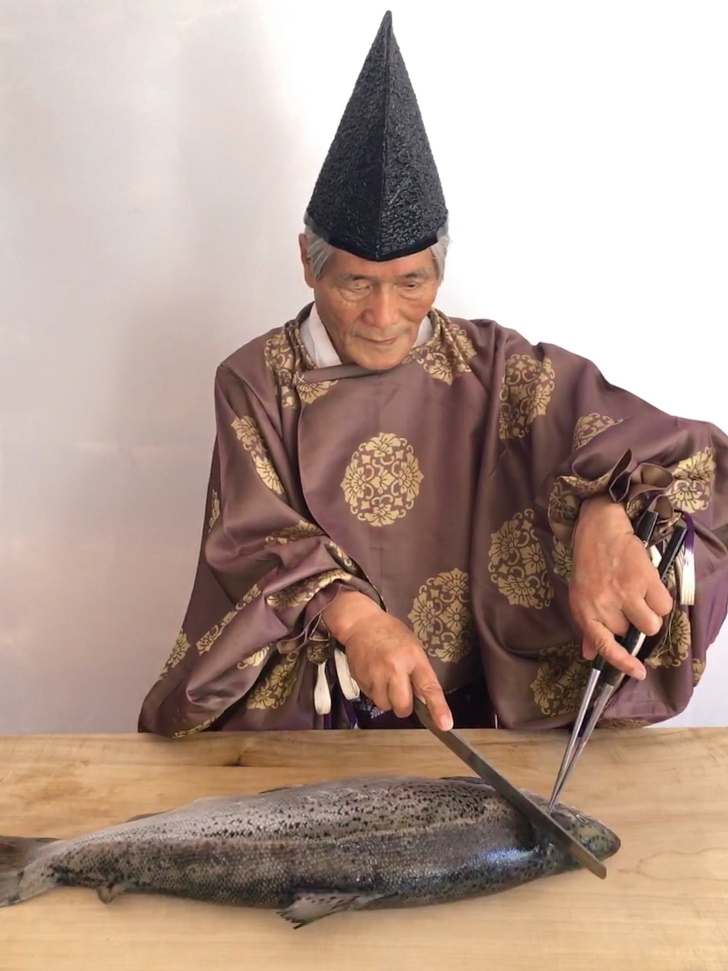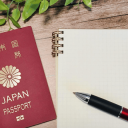The influential history of Japanese knives
The traditional Japanese ritual of hocho-shiki (knife ceremony) dates back to the ages. The mere existence of this ritual is indicative of how deep-rooted knives are in Japanese cooking and daily life. We spoke to Hideo Dekura, a Japanese chef based in Sydney and qualified hocho-shiki instructor, about the ritual’s traditions and the influence knives have on cooking.

Q: What is the ritual of hocho-shiki?
A: While there are many theories in existence, hocho-shiki is a ritual that was performed 1,300 years ago during the Nara period as an imperial court event and is said to have originated as a way to present fish, poultry, and other produce to Emperor Koko, the 58th emperor of Japan. Food to be served to emperors would be sliced up using only a knife and a pair of chopsticks. Emperors at the time were considered to be kami (gods), and the act of humans touching food to be served to the emperor would contaminate it. Whilst avoiding potential human contamination, every movement of the ritual was carefully planned out for beautiful presentation as it was often performed at dinner parties or other social events. Only the most delicious and freshest food fit for an emperor would be served as a result. The chef conducting these rituals was known as a hocho-nin (knife wielder) and was quite likely considered the cream of the crop in the Japanese culinary world.
Performances of the 1,300-year-old ritual of hocho-shiki can still be found to this day at Japanese shrines and temples to express gratitude to the gods for bountiful harvests. I have also performed this ritual myself a number of times in Australia. An eboshi (headgear of court nobles), and hitatare (flowing dress of court nobles) are still worn in the modern iteration of this ritual, and the act of filleting fish using only a pair of cooking chopsticks and a knife, without the hands ever touching the fish itself, remains intact.

Q: Has modern Japanese cooking been influenced by hocho-shiki?
A: I would definitely say so. The foundations of hocho-shiki come from the appreciation of food. Each of the beautiful, meaningful motions shows respect towards food; and the mentality to waste nothing can be found in the detailed, thorough cuts of the knife. In practicing this tradition, I believe its philosophy has been passed through to present day and is reflected in the spirit of modern Japanese cooking.
Q: For the act of filleting meats to become a ritual; does that mean that knives play a significant role in cooking?
A: They do. Do you happen to know what Japanese dish exemplifies this? Sashimi. It used to be served in vinegar, much like namasu (a dish of raw fish and vegetables seasoned with vinegar), but it is now what we know it as today. How the fish is sliced can really affect how sashimi can taste. The fibres of the fish can collapse if the sliced cross-section is uneven, leading to a drop in freshness, but the freshness is maintained and the texture is pleasant if there is a sharp, clean cut, resulting in an enhanced flavour. I would assume that skilled chefs were known as hocho-nin back in the day because they possessed the knowledge of different cuts having impacts on flavours, which is why I believe that knives greatly impact the quality of food.
Q: What is the difference between Japanese knives and Western knives?
A: Sharpness. Western knives have their own advantages and are easy to maintain, but you can’t ignore how incredibly sharp Japanese knives are. Food items can be cut up without destroying the fibres and no force needs to be exerted. They should feel well-balanced and almost like an extension of your own body when used since they are produced with the wielder in mind. While Japanese knives can be difficult to maintain, there is meaning behind the effort involved in the upkeep of a cherished tool. A Japanese knife’s true worth becomes clearer as you use it and the burgeoning desire to foster these knives is what makes them so great.

Japanese Chef: Hideo Dekura
Born into a family running a longestablished Japanese restaurant in Tokyo. Whilst learning about Japanese cuisine from his father, he also learned the Iemoto-Shijo-style of hocho-shiki to polish up his traditional cooking skills. Upon graduating from university, he took his knife and set off overseas on a journey of mastery. After journeying around Europe and the United States, he found his way to Australia in the 1970s. He has ventured into various industries such as catering, restaurants, and food consulting, and has also published a number of books. His contributions to Japanese cuisine have been recognised three times by the Japanese government: in 2007 with an award from the Minister of Agriculture, Forestry, and Fisheries; in 2015 as a recipient of commendation from the Minister of Foreign Affairs; and his appointment in 2016 as the Japanese Cuisine Goodwill Ambassador.











